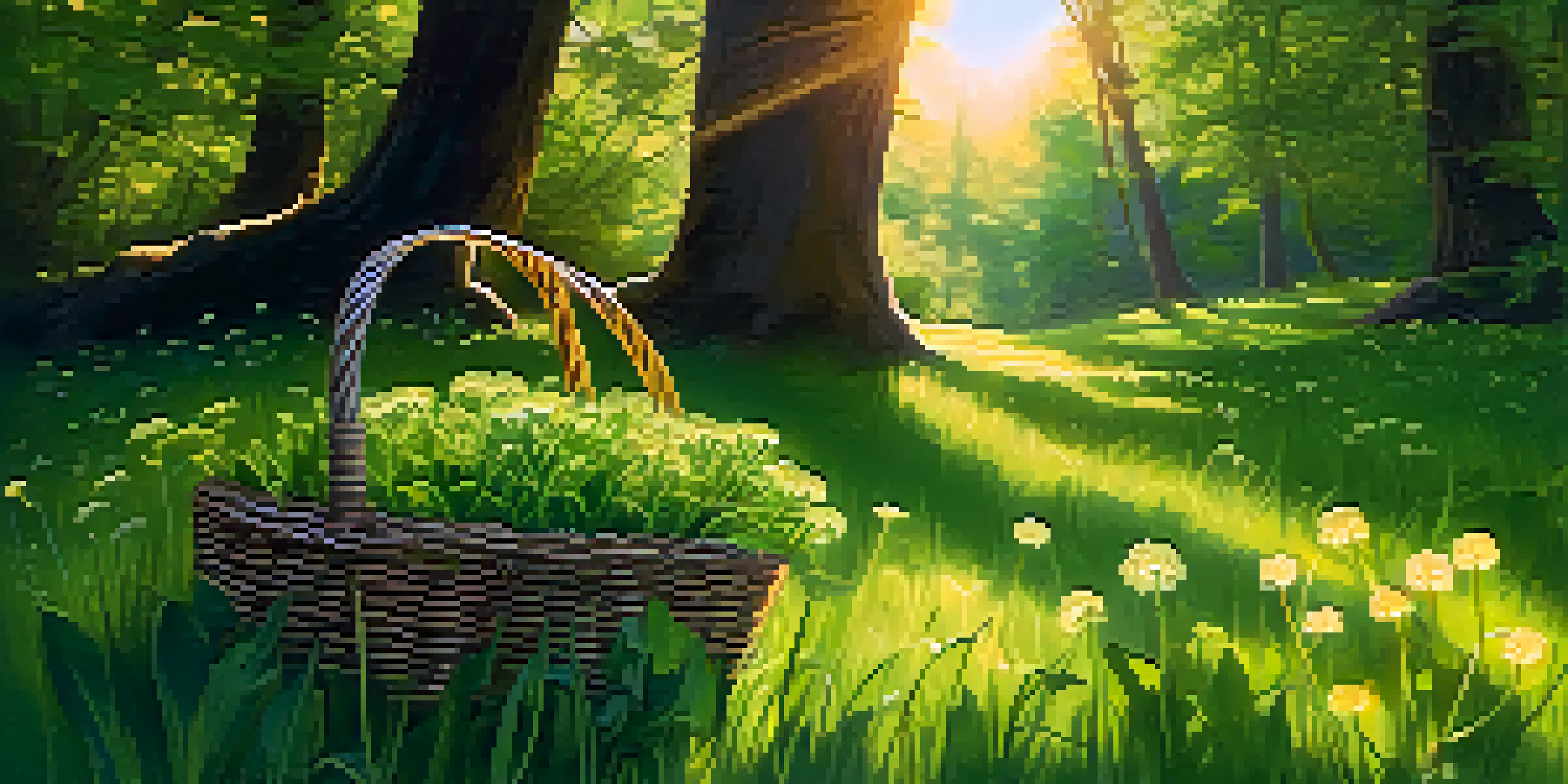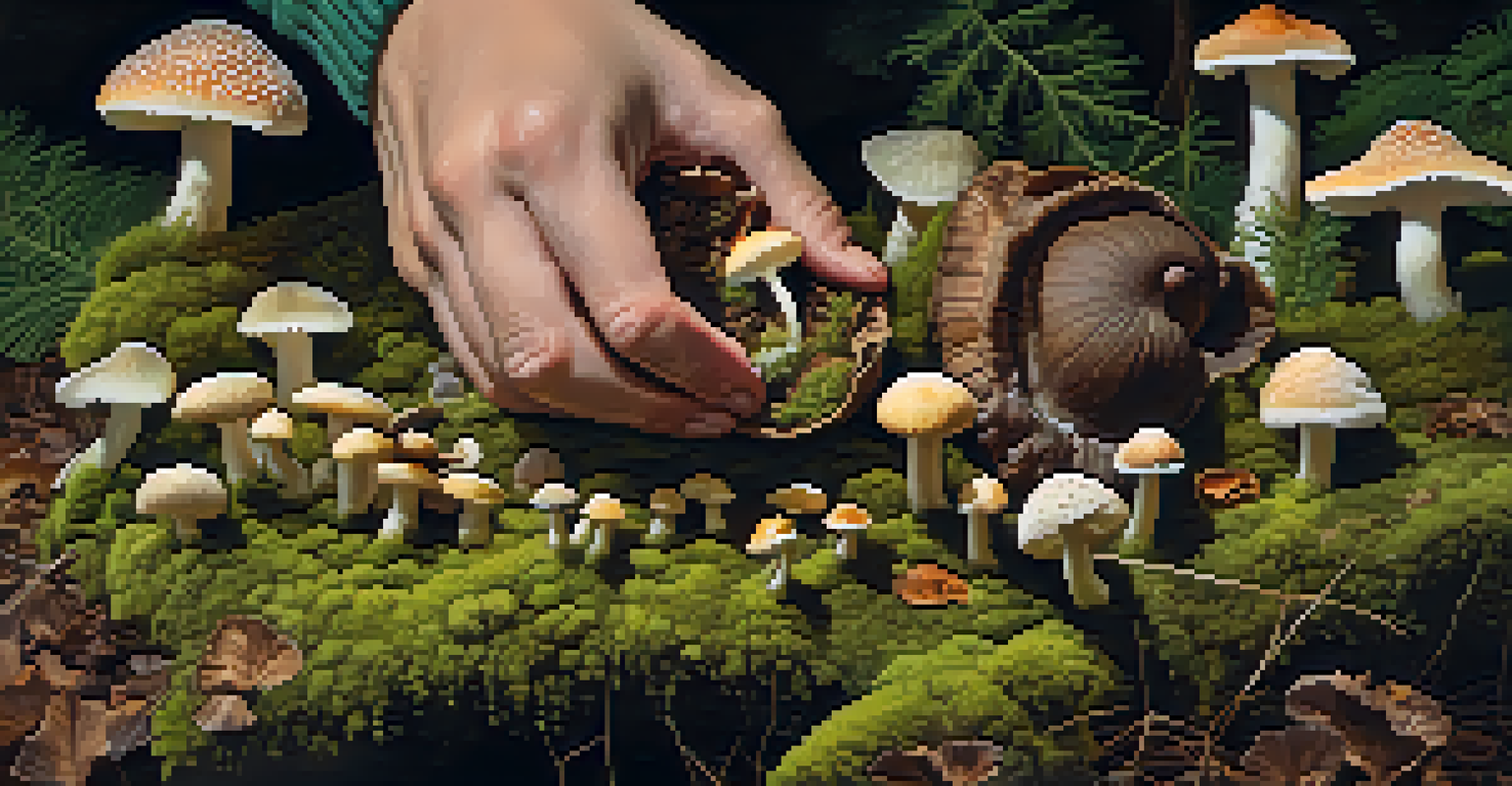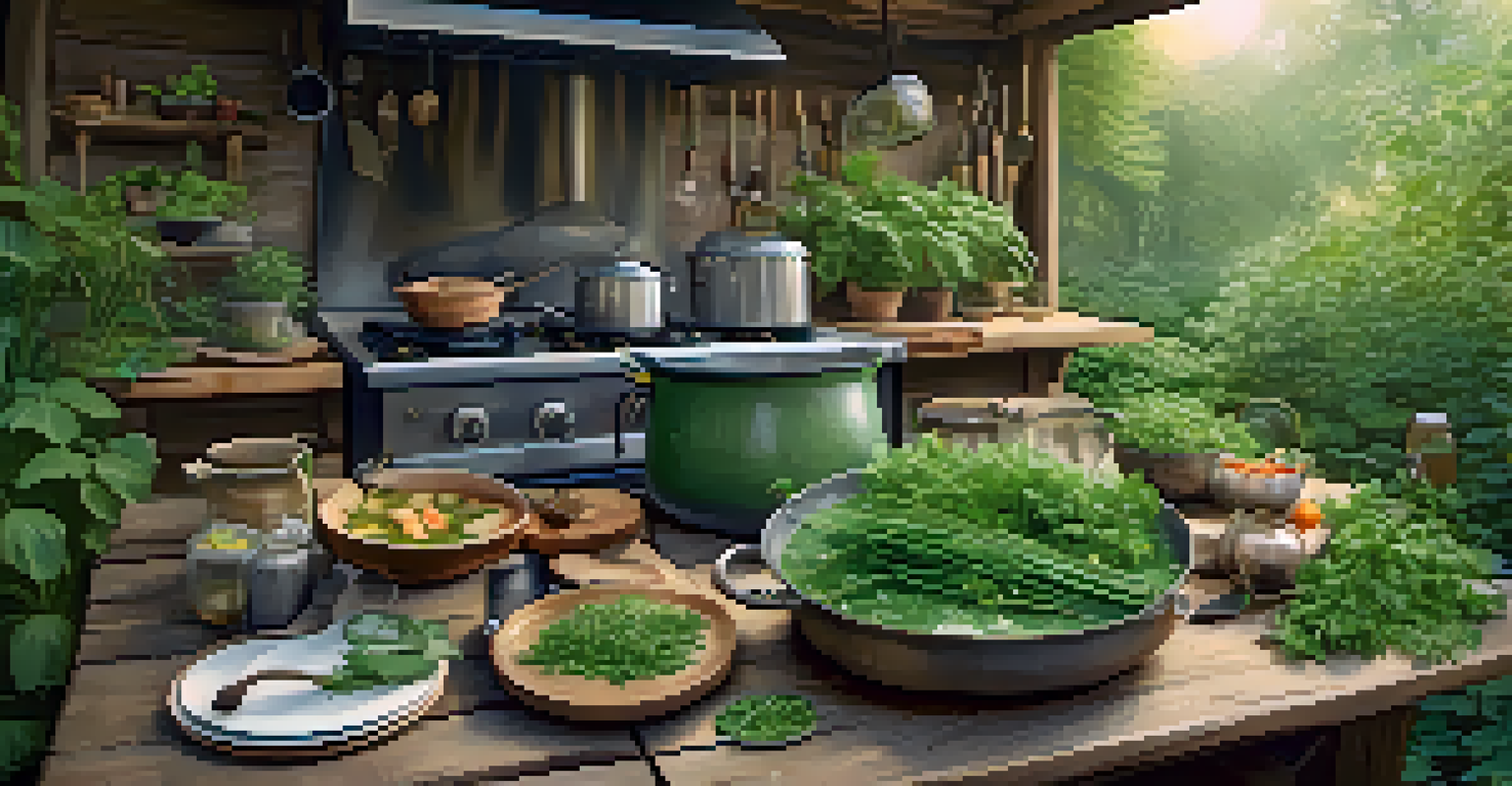Foraging Safety: Identifying Edible and Toxic Wild Plants

Understanding Foraging: What You Need to Know
Foraging is the practice of searching for and gathering wild food. It can be an exciting way to connect with nature and discover new flavors. However, it’s essential to approach foraging with caution and knowledge. Understanding which plants are safe to eat and which are not is crucial for a safe experience.
Foraging is not just about collecting food; it's about understanding and respecting nature's balance.
Many people are drawn to foraging as a way to eat more sustainably and enjoy the outdoors. But the world of wild plants can be tricky. Some edible plants have toxic look-alikes, making it vital to educate yourself before diving in. This is where learning becomes your best ally.
Starting your foraging journey means respecting nature and its offerings. Always ensure you have the proper tools, such as a field guide or an app, to help identify plants. With the right preparation, you’ll not only enjoy the bounty of the wild but also do so safely.
The Basics of Plant Identification
Identifying plants is at the heart of foraging safely. Start with the most common characteristics: leaf shape, flower color, and growth patterns. Observing the environment where the plant grows can also give you clues. For instance, many edible plants thrive in sunny, moist areas.

Use reliable resources, such as local foraging classes or reputable field guides, to help you learn. Take notes or photos of plants you encounter to help with identification later. Remember, even experienced foragers occasionally make mistakes, so never rush the process.
Foraging Requires Caution
Understanding which plants are safe to eat is crucial to ensure a safe foraging experience.
A good rule of thumb is to never eat a plant unless you are 100% sure of its identity. This is especially important because some plants can cause severe reactions, even in small amounts. Always err on the side of caution—if in doubt, leave it out!
Common Edible Plants to Forage
Many wild plants are not only safe to eat but also delicious! Some popular choices include dandelions, wild garlic, and stinging nettles. Dandelion greens can add a peppery kick to salads, while wild garlic can enhance the flavor of numerous dishes.
The best way to learn about foraging is to get out there and do it, but always remember to take your time and be cautious.
Another well-loved foraged item is the mushroom. However, mushroom foraging requires extra caution, as many edible varieties have toxic counterparts. Always consult a knowledgeable source before consuming wild mushrooms to avoid dangerous mistakes.
As you gain confidence in identifying safe plants, you’ll find foraging to be a rewarding experience. The joy of harvesting your own food from the wild is unlike anything else, and it connects you to nature in a profound way.
Recognizing Toxic Plants: Key Features
Just as knowing edible plants is essential, recognizing toxic plants is crucial for safe foraging. Many poisonous plants have distinctive features that can help you identify them. For example, plants like hemlock have fern-like leaves and grow in moist areas, making them look similar to edible plants.
It's important to familiarize yourself with the most common toxic plants in your area. Researching local flora can save you from potentially dangerous encounters. Some plants may cause mild stomach upset, while others can lead to severe health issues or even death.
Identify Edible vs. Toxic Plants
Familiarizing yourself with common edible and toxic plants is essential for successful and safe foraging.
When you’re out foraging, be particularly cautious with plants that have bright colors, unusual shapes, or strong odors. These characteristics can often indicate toxicity. Learning to respect these warning signs will help ensure you have a safe and enjoyable experience in the wild.
The Importance of Proper Preparation
Once you’ve foraged some wild edibles, proper preparation is key to enjoying them safely. This means thoroughly washing the plants to remove dirt, insects, and any toxins that may linger. Some plants also require cooking to neutralize harmful compounds, so always research the best preparation methods.
For example, stinging nettles can be enjoyed in soups or teas but must be cooked first to eliminate their sting. This doesn’t just make them safe to eat; it also enhances their flavor. Understanding how to prepare your foraged finds properly ensures a delightful culinary experience.
Taking the time to prepare your foraged foods correctly not only enhances their taste but also maximizes their nutritional benefits. Embrace the process of cleaning and cooking your wild harvest, and you might find a new appreciation for the flavors of nature.
Foraging Etiquette: Respecting Nature
Foraging isn't just about gathering food; it's also about respecting nature and its ecosystems. Always forage responsibly by following local regulations and guidelines. Some areas have restrictions on foraging to protect native plants and wildlife, so be sure to know the rules before you go.
When foraging, take only what you need and leave enough for wildlife and future foragers. This practice ensures that plant populations can regenerate and continue to thrive. Remember, nature is a shared resource, and being a considerate forager benefits everyone.
Respect Nature When Foraging
Practicing responsible foraging by following regulations and taking only what you need helps preserve natural ecosystems.
Consider joining local foraging groups or communities. These organizations often promote sustainable practices and can provide support and knowledge. By connecting with others, you can share experiences and learn more about foraging while helping to preserve our natural spaces.
Staying Safe While Foraging Alone
Foraging can be a solitary pursuit, but it’s important to prioritize safety while exploring alone. Always let someone know your plans, including where you’re going and when you expect to return. This way, someone will be aware if you encounter any issues.
Additionally, carry a basic foraging kit that includes a first aid kit, water, and a navigation tool. This ensures you’re prepared for any unexpected situations while out in nature. Being equipped can make all the difference in enjoying your foraging adventure.

Lastly, trust your instincts. If a location feels unsafe or if you’re unsure about a plant, it’s okay to turn back. Foraging should be a joyful and enriching experience—your safety is paramount!